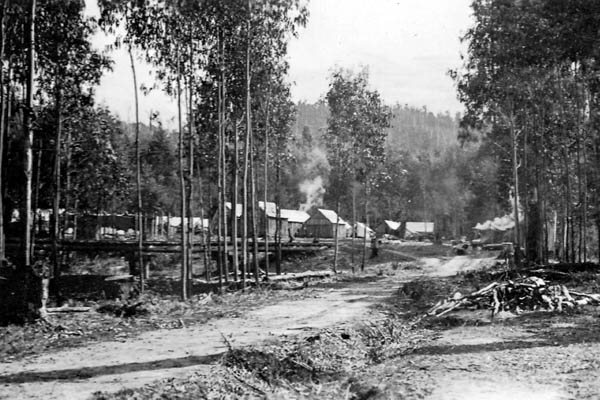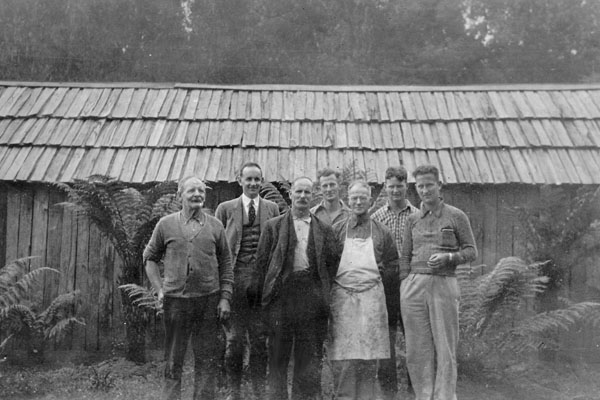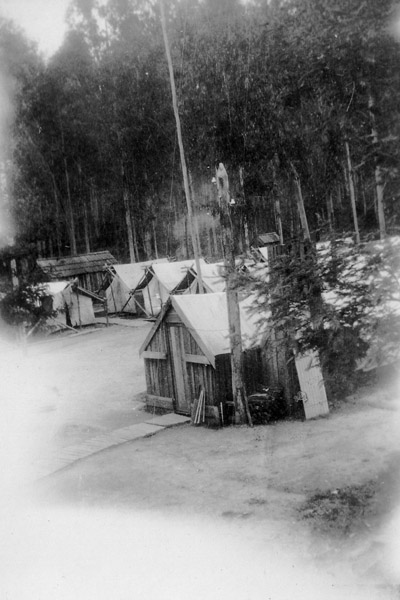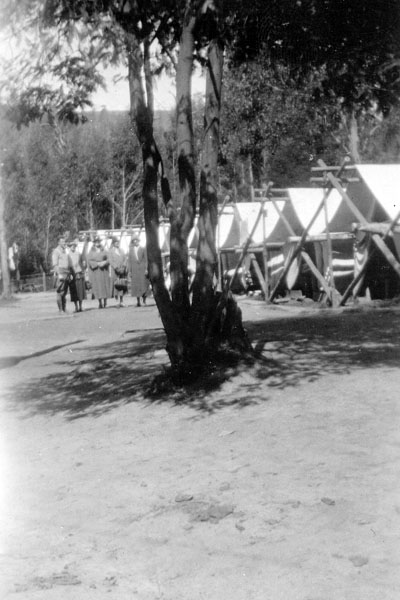The Noojee Boys' Camp
P McHugh
During the Great Depression of the 1930s, the FCV undertook large unemployment programs of firebreak slashing, silvicultural thinning, weed spraying and rabbit control.
By 1935-36 the Commission employed almost 9000 men for periods of up to eight weeks at a time.The camps generally comprised 25 men with two-thirds being from the city. And despite the blisters, many remained in the country to make their future.
However, there was a particular need to provide opportunities for young people. Newspapers warned of long-term consequences of enforced idleness of youth of the nation,claiming that if nothing was done “many would become permanently unemployable and would settle down to a life on the dole or turn to crime.”
See Aso: FCV Boys Camps
This camp was on the site that remains (2022) a centre for forest management in the area.

Noojee Boys Camp - the approach from Noojee
1934
Source: R Graham via AL Benallack

Noojee Boys Camp staff - R Mumford (Chief Cook), AL Benallack (Forester), D Williams (Foreman), F Noar ?? but caption on photo unclear, Asst cook, W Fisher (Senior Boy), B Fidler (Foreman)
1934 or 1935
Source: R Graham via AL Benallack

Noojee Boys Camp - Headquarters
1934 or 1935
Source: R Graham via AL Benallack

Noojee Boys Camp - "Visitors to the place were legion" - AL Benallack & "4 old dears"
1935
Source: R Graham via AL Benallack
